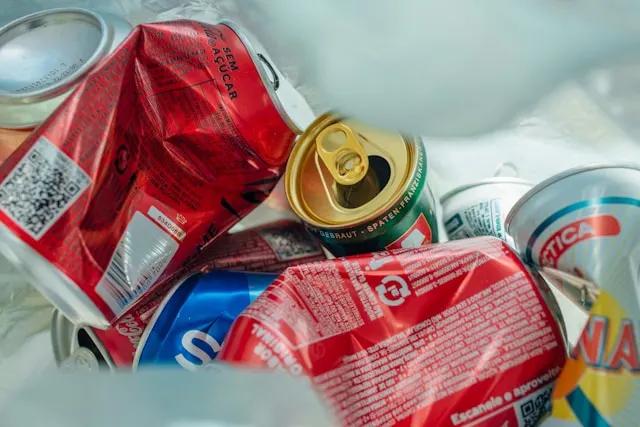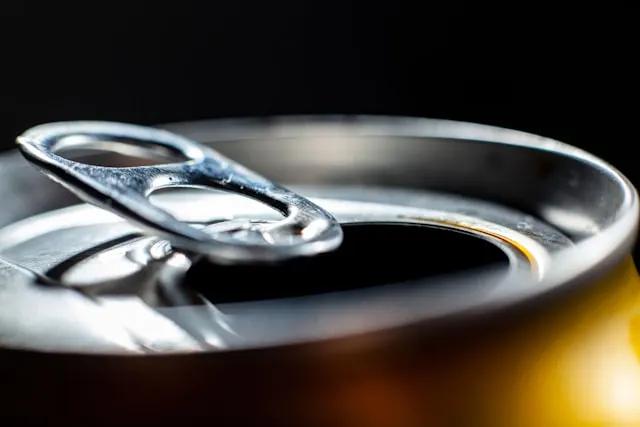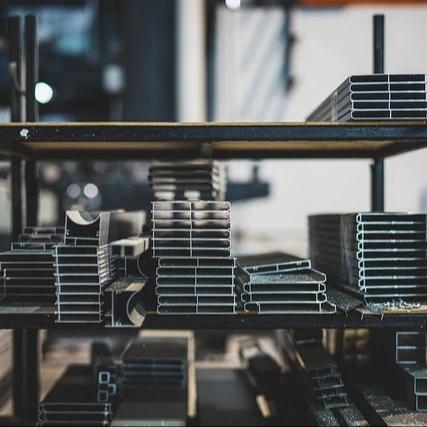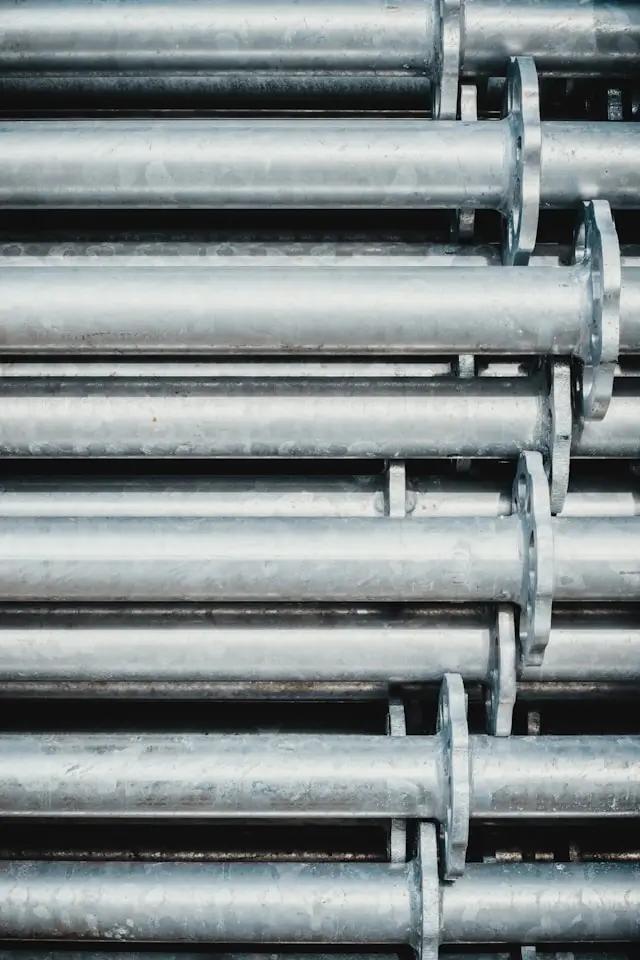From scrap to shine: the economic impact of aluminum recycling
Aluminum recycles infinitely and its reuse turns waste into wealth. Learn more about the influence of aluminum in the global economy and its journey from scrap to final use.
The basics about aluminum
Aluminum, a ubiquitous element in the Earth's crust, stands as a testament to human ingenuity and adaptability. Its silvery-white luster, lightweight structure, and remarkable properties have rendered it indispensable across a myriad of industries and applications. From the soaring heights of aerospace engineering to the intricate details of everyday consumer goods, aluminum's versatility knows few bounds. Yet, its significance transcends mere utility, as the story of aluminum intertwines with a vital narrative of sustainability and environmental stewardship. With a remarkable capacity for recycling, aluminum embodies the ethos of circular economy, where innovation meets responsibility. In this article, we delve into the essence of aluminum: its origins, properties, myriad applications, and the pivotal role recycling plays in sustaining its lifecycle and minimizing environmental impact.

Which are the most common economic uses of aluminum?
Aluminum is extensively found in transportation: aircraft, automobiles, trains, and marine vessels utilize aluminum for its lightweight yet durable properties, enhancing fuel efficiency and performance. In construction, aluminum is commonly used in building structures, windows, doors, and façades due to its strength, corrosion resistance, and versatility. Aluminum packaging is very versatile: aluminum is extensively used in packaging materials, such as cans, foil, and containers, due to its ability to preserve freshness, resist corrosion, and be easily recycled. Electrical and electronics also commonly feature aluminum, which is utilized in electrical wiring, cables, and electronic components due to its conductivity, lightweight nature, and ability to dissipate heat effectively. In machinery and equipment, aluminum alloys are employed in manufacturing machinery, equipment, and tools for their strength, durability, and corrosion resistance.
The aluminum recycling journey, its challenges and benefits
The process of recycling aluminum begins with collection. Aluminum products, such as cans, foil, and packaging, are collected from households, businesses, and recycling centers. Once gathered, these items are transported to specialized recycling facilities where the intricate process of transforming waste aluminum into reusable metal unfolds.
At the recycling facility, the first step involves sorting and cleaning the collected aluminum. The aluminum items are sorted based on their type to ensure purity. For instance, aluminum cans are separated from aluminum foil and other aluminum products. After sorting, the aluminum undergoes a thorough cleaning process to remove any contaminants like food residue, labels, or other materials that might have adhered to the surface.
Following cleaning, the aluminum is shredded into small pieces or compacted into bales, depending on the recycling facility's capabilities. These shredded or baled aluminum pieces are then fed into a furnace where they are melted at high temperatures. This melting process removes any coatings or impurities from the aluminum. The molten aluminum is then cast into ingots or blocks, which are ready for use in manufacturing new products.
Once the recycled aluminum ingots are produced, they are transported to manufacturing facilities where they serve as raw material for a variety of products. This could range from new aluminum cans for beverages to automotive parts, construction materials, or even aerospace components. The life cycle of these products eventually comes full circle when they reach the end of their usefulness and are ready to be recycled again, restarting the recycling journey.
Despite the numerous benefits associated with aluminum recycling, the process is not without its challenges. One of the most significant challenges is contamination. Aluminum products often contain other materials such as plastics, paper, or food residue, which can contaminate the recycling process. These contaminants can affect the quality of recycled aluminum, making it less desirable for manufacturers and reducing its market value.
Another challenge lies in the collection and sorting of aluminum waste. Inefficient collection systems and inadequate sorting infrastructure can result in mixed materials being sent to recycling facilities. Manual sorting processes can be labor-intensive and costly, leading to increased operational expenses for recycling facilities. Furthermore, fluctuating market prices for recycled aluminum can make recycling less economically viable at times, posing financial challenges for recyclers and manufacturers alike.
Technological challenges also play a role in the aluminum recycling process. Developing advanced sorting technologies to efficiently separate aluminum from other materials is a continuous challenge. While there have been significant advancements in recycling technology, there is still room for improvement to optimize energy efficiency and reduce operational costs. Additionally, consumer awareness and participation in recycling programs remain a concern. Many consumers are unaware of the benefits of aluminum recycling or may not participate due to convenience, lack of knowledge, or skepticism about the effectiveness of recycling.
The benefits of aluminum recycling are manifold and play a pivotal role in promoting sustainability and resource conservation. One of the most significant environmental advantages of recycling aluminum lies in energy savings. Producing aluminum from recycled materials requires significantly less energy compared to extracting it from bauxite ore. In fact, recycling aluminum can save up to 95% of the energy needed for primary production, making it an energy-efficient process.
Moreover, recycling aluminum helps reduce the amount of waste going to landfills, thereby conserving valuable landfill space and reducing environmental pollution. By diverting aluminum waste from landfills, we also reduce the need for mining bauxite ore, which can have detrimental environmental impacts such as deforestation, habitat destruction, and soil erosion. Additionally, recycling aluminum preserves other natural resources like water and reduces greenhouse gas emissions associated with aluminum production, contributing to mitigating climate change.
From an economic perspective, aluminum recycling contributes to job creation and economic growth. The recycling industry provides employment opportunities in various sectors, including collection, sorting, processing, and manufacturing. By recycling aluminum, we also conserve valuable resources, reducing the demand for raw materials and saving money for manufacturers. This economic efficiency further enhances the attractiveness of aluminum recycling as a sustainable and financially viable practice.

Where does scrap aluminum come from?
Manufacturing processes
End-of-life products
Demolition and construction
Industrial scrap
The recycling of used beverage cans (UBCs) offers significant environmental benefits, including energy savings, reduced greenhouse gas emissions, and conservation of natural resources.
Additionally, the aluminum recycling process is highly efficient, with recycled cans returning to store shelves in as little as 60 days!



Types of scrap aluminum
According to ISRI (Institute of Scrap Recycling Industries) specifications, aluminum scrap is categorized into various grades based on its composition and characteristics. One of the most common grades is "Tense" (New Cast Aluminum Engines), which consists primarily of aluminum castings from automobile and truck engines. Another grade is "Taint Tabor" (Old Cast Aluminum), which includes clean aluminum castings, such as those from automotive, aircraft, and boat engines. "Troma" (Mixed Low Copper Aluminum) is another classification, comprising aluminum scrap with a low copper content, typically derived from mixed automotive castings. ISRI specifications also include "Taboo" (Old Sheet Aluminum) and "Talk" (New Pure Aluminum Wire and Cable). These classifications serve to streamline the recycling process by facilitating the identification and sorting of aluminum scrap for efficient reprocessing and reuse in various industries.
What are the top three countries that buy aluminum scrap?

China
China has been a significant importer of scrap aluminum for its manufacturing industries, particularly in the automotive, construction, and consumer goods sectors. The country's demand for recycled materials to support its industrial activities has made it one of the largest buyers of scrap aluminum on the global market.

India
India is another prominent importer of scrap aluminum, driven by its growing manufacturing sector and infrastructure development projects. The country's demand for recycled materials to produce aluminum products for construction, transportation, and consumer goods contributes to its status as a top buyer of scrap aluminum.

South Korea
South Korea has a strong industrial base that relies on imported scrap aluminum for its manufacturing processes, including the production of automotive parts, electronic devices, and construction materials. The country's demand for recycled aluminum to support its various industries positions it as one of the leading buyers of scrap aluminum globally.
How is aluminium recycled?
This is an example video of How is Aluminium recycled:
Old or scrap aluminium is melted in a furnace and cast into the desired shape. This process is known as remelting. Aluminium is more easily recycled than other materials because it is strong, durable, flexible, impermeable, lightweight, and corrosion-resistant

Buying and selling scrap aluminum with METYCLE
At METYCLE we buy and sell all types of aluminum, especially UBCs, zorba, tablet and tabloid (as specified and defined by ISRI (Institute of Scrap Recycling Industries). We are metal specialists who will work closely with you to either find the best aluminum for your requirements or to create immensely scalable business for your scrap aluminum. Get in touch with us today to partner up with the world's leading scrap metal marketplace! We are based in Germany, and through us you get access to hundreds of suppliers and thousands of products - all while enjoying hassle-free shipping and customs and favourable payment terms.
Read more
Recycle metals with us
Recycle metals with us
Our metals
- Aluminum: the economic impact of recycling
- Copper: uncovering the sustainable scrap cycle
- Lead: the journey of scrap metal recycling towards a greener future
- Magnesium: scrap as a renewable resource for circular economy
- Nickel: scrap recycling as a value maximizer for sustainable industry growth
- Zinc: the sustainable promise of scrap recycling
Inside METYCLE
Inside METYCLE
Engineering and Technology at Metycle
Want to stay updated via WhatsApp?
Stay ahead with METYCLE's products! Join our WhatsApp broadcast channel to receive real-time updates on available metals and unbeatable deals. Explore our current product offerings and never miss out on the best opportunities!
© 2025 METYCLE
